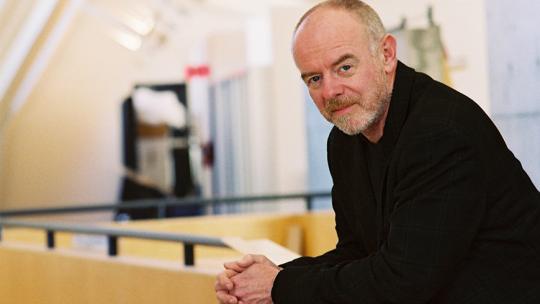

By Erin Catherall
Have you ever wanted to learn the role of a university art gallery and how it displays contemporary artworks? Scott Watson, Curator of the Morris & Helen Belkin Art Gallery at UBC, investigates these questions in a recent Arts Wednesdays Lecture at Robson Square.
What is contemporary art? For some, contemporary art is a form of research that produces its own knowledge. Others argue that contemporary art is elitist, disengaging and simply frustrating to understand. For Scott Watson, he believes art has another role. It is the very nature of us (the viewers) not being able to understand or define contemporary art, that allows art to yield something different. Instead of falsifying what we study in order to make it comprehensible, we become aware of our own subject position when viewing art. We begin to ask who we are rather than what the object is. As the German/Swiss painter Paul Klee said, “Art does not reproduce what we see; rather, it makes us see”.
Maybe the role of a university art gallery is not to produce works of research, but rather to expose students to works of art that will prompt them to be more attentive citizens. This exposure could improve a student’s critical ability to really see in our image based world.
What about the term “contemporary”? What classifies a contemporary piece of art? Watson argues that this word is problematic for defining art of the 21st century. With the modernist train now run out of steam and post-modernism in its tracks, we are no longer certain if our society is moving forward or backwards. As a result, the term “contemporary”, which suggests a more modernist idea of progress and newness, may not be the most suitable word for classifying art of this generation.
In the lecture, Watson discussed the Belkin’s current exhibition, Faces. This show explores the diverse ways faces are represented, looking specifically at how ideas of gender, race, class and historical contexts effect modes of viewing and shape subjectivity.
While some of the displayed artworks are very obvious representations of faces, others are not so explicit. Viewers are forced to make connections between different works and see the art in a new abstract way. For instance, Neil Campbell’s Narcissus, depicts two large black circles (396.0 x 396.0 cm) painted on two walls in the corner of the gallery. Depending on one’s location in the room, one experiences the work differently and becomes aware of his or her spatial relationship to the art piece. As a result a new understanding of the work is revealed to the viewer.
“There are other things we do that are equivalent to knowledge,” said Watson. “Sometimes we make connections that don’t make discursive sense.”
Arts Wednesdays, a free public lectures series now in its seventh successful season, brings UBC’s outstanding Faculty of Arts to the entire community. Held at Robson Square in downtown Vancouver, this lecture series will feature a diverse range of UBC faculty members and students devoted to the creative arts.


